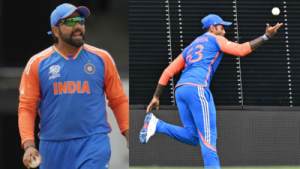The recent, sudden death of Indian television star Shefali Jariwala has raised concerns about the increasing prevalence of cardiac issues in women. While the official cause of death is pending a post-mortem examination and forensic analysis, initial reports suggest cardiac arrest. This has brought into sharp focus a worrying trend affecting seemingly healthy, middle-aged women.

Sudden cardiac death (SCD), once considered rare among young adults, is now occurring more frequently, especially in India. This has captured the attention of the medical community. Cardiovascular diseases account for about 28% of all deaths in India. Roughly 10% of these are linked to SCD. A concerning number of these deaths happen in people aged 30 to 50.
India's evolving socioeconomic environment has led to significant lifestyle changes. These include more sedentary behavior, diets high in processed foods, increased tobacco use, and elevated stress levels. These factors are contributing to a rise in hypertension, obesity, diabetes, and coronary artery disease, all of which increase the risk of SCD.
Historically, SCD was more common in men. However, recent studies highlight the unique and often overlooked risks that women face. Unlike men, women who experience SCD often have no prior cardiac diagnoses.
Structural issues, like myocardial scarring and ischemic heart disease, often go undetected and are only found during post-mortem exams. Adding to the concern is the fact that many women don't show typical warning signs, such as chest pain or ECG abnormalities. This makes early detection very difficult.
Women in their 40s and 50s, like Shefali Jariwala, face a hidden but significant risk from underlying heart conditions. In younger people, SCD is often linked to genetic or electrical disorders, including Hypertrophic Cardiomyopathy, Arrhythmogenic Right Ventricular Cardiomyopathy, Long QT Syndrome, Brugada Syndrome, and Catecholaminergic Polymorphic Ventricular Tachycardia. Often, these conditions don't cause symptoms until a fatal arrhythmia happens.
In this age group, other factors such as left ventricular hypertrophy, obesity, and myocardial fibrosis can raise the risk. The development of myocardial scarring and fibrosis over time can result from long-term exposure to cardiovascular risks, repeated micro-ischemic events, and hormonal changes, particularly during perimenopause. Additionally, conditions like Myocardial Infarction with Non-Obstructive Coronary Arteries (MINOCA), which are more common in younger women, often leave no traces in autopsies, which further complicates diagnosis.
Stress was a significant factor in Shefali's life, as she began her career as a teen star. Takutsobo cardiomyopathy, also known as Broken Heart Syndrome or Stress-induced Cardiomyopathy, is another major cause of SCD in women who multitask and experience high levels of emotional stress. Shefali also dealt with personal challenges related to her divorce, as well as anxiety, depression, and epilepsy, all of which can affect cardiovascular health. Psychiatric medications, especially those that prolong the QT interval, have also been linked to a higher risk of SCD.
Despite the seriousness of the issue, women are often underrepresented in preventive heart care. Symptoms like fatigue, palpitations, or breathlessness are frequently dismissed or misattributed, which delays crucial intervention. Unlike heart attacks, which are caused by blocked arteries, cardiac arrest is the result of electrical disturbances that cause the heart to stop suddenly. Immediate CPR and defibrillation are frequently the only lifesaving actions. This reinforces the importance of early risk identification.
Medical experts are now advocating for more targeted public health strategies. There is a need for improved early screening tools that are specifically designed for women, particularly during perimenopause when cardiac risks increase.
The entertainment industry and Shefali Jariwala’s fans are mourning her loss. However, her tragic death serves as a call to action. It brings attention to a neglected health crisis and emphasizes the urgent need for systemic change in how women's heart health is managed.
Shefali Jariwala captivated audiences with her presence on screen. In the wake of her untimely death, she may be remembered as a symbol of awareness, a reminder that the silence of the heart can be fatal, and that women's cardiac health requires immediate attention, investment, and action.
Newer articles
Older articles
 Gujarat Cricket Association Gears Up to Launch T20 League in 2025-26 Season
Gujarat Cricket Association Gears Up to Launch T20 League in 2025-26 Season
 Black Caps Set for Blockbuster Home Summer Against Cricket Giants
Black Caps Set for Blockbuster Home Summer Against Cricket Giants
 Daren Sammy Fined, Receives Demerit Point for Umpire Criticism After Test Match Controversy
Daren Sammy Fined, Receives Demerit Point for Umpire Criticism After Test Match Controversy
 Elon Musk Calls for ISS Retirement, Citing Mars Focus After $1.25B Allocation
Elon Musk Calls for ISS Retirement, Citing Mars Focus After $1.25B Allocation
 Smith Aims for Second Test Return After Unique Baseball Cage Recovery
Smith Aims for Second Test Return After Unique Baseball Cage Recovery
 Najmul Hossain Shanto Resigns as Bangladesh Test Captain After Sri Lanka Defeat
Najmul Hossain Shanto Resigns as Bangladesh Test Captain After Sri Lanka Defeat
 Sharma Reveals Heart-Stopping Moment of Yadav's Game-Changing Catch in T20 World Cup
Sharma Reveals Heart-Stopping Moment of Yadav's Game-Changing Catch in T20 World Cup
 Ex-India Star Engineer Slams ECB's Pataudi Trophy Renaming, Questions Anderson-Tendulkar Choice
Ex-India Star Engineer Slams ECB's Pataudi Trophy Renaming, Questions Anderson-Tendulkar Choice
 Man City Title Stripping: Unprecedented Chaos Looms for Premier League Amid Financial Allegations
Man City Title Stripping: Unprecedented Chaos Looms for Premier League Amid Financial Allegations
 Jin's Solo Concert in Korea: A Reunion with ARMY, Surprise Guests, and Electrifying Performances
Jin's Solo Concert in Korea: A Reunion with ARMY, Surprise Guests, and Electrifying Performances